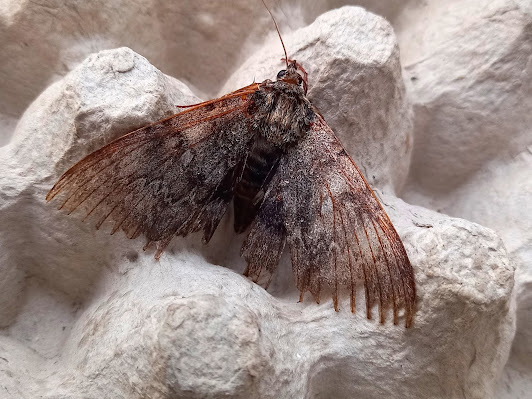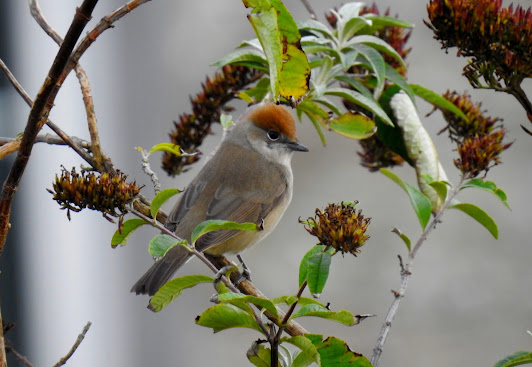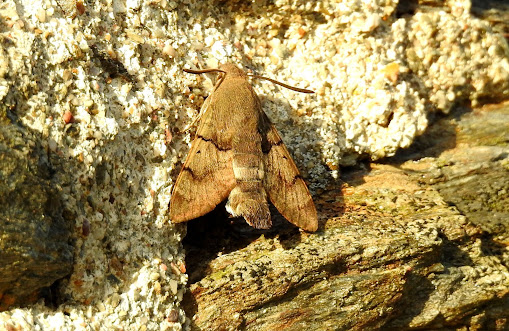Saturday 9th October 2021.
Since the early part of this week, while I was away in Devon, a small sandpiper species was found at Normandy Marshes, near Lymington. At first, the bird was thought to be a juvenile Semipalmated Sandpiper and lingered all the time with a flock of Dunlin on the small islands on the reserve. However, some doubt crept in and Western Sandpiper could not be ruled out. The arguments raged all week on its ID when eventually, it was decided that it was a winter-plumage Western Sandpiper; a first for Hampshire.
Fortunately for both Andy and myself, the bird lingered into Saturday and though it was seen briefly at first within the nearby harbour feeding with Dunlin on the mud, it disappeared and then, roughly around midday the bird was showing again. It was allegedly among a big flock of Dunlin on one of the islands, but despite a good search through them, I was doubting that the sighting was reliable. Despite a few more flocks of both Dunlin and Ringed Plovers coming into land on the islands from the incoming tide, there was still no sign of the bird, despite a good number of birders present and then it popped out.
A smaller, thinner and most certainly paler wader came into view behind the main flock of Dunlin and I was quickly telling others that the Western Sandpiper was now showing very well. I quickly took as many photos of the bird as possible as it busied itself walking around by the waters edge then joining the Dunlin on the grassy area. Without warning, the bird then flew away from us but fortunately landed on the same island but out of view. After a while, Andy and myself joined the other birders over on the south side of the reserve and eventually, the bird popped out and I managed to grab some film footage of it. The bird never got any closer but through the scope and in this superb light, one could clearly see all the distinctive features of the bird.
This was only my second ever Western Sandpiper, after one was seen many years ago off Brownsea Island, Dorset and of course, not only a ‘year-tick’, but a very good Hampshire ‘tick’. It was a ‘lifer’ for Andy, his fourth ‘lifer’ of the year. I met one of the ‘Lazee’ birders, Andy Tew and another chap whose name I forgot, but met a few weeks back at Warblington while watching the Glossy Ibis. It was nice to get another point of view about the bird and also catch up on recent sightings. No doubt, we will probably meet again.
It was very busy with the bird life on the reserve, with waders present including the Dunlin as well as Ringed Plover, numerous Redshank, Lapwing, Oystercatchers, Curlew, 2 LIttle Stints, Turnstone, at least 10 Bar-tailed Godwit, 6 Greenshank; though we failed to see the Curlew Sandpiper that was present. Can't win them all. A showy Kingfisher performed well, seen catching fish from a small post on one of the islands. Wildfowl were in good numbers including Teal, Wigeon and an awful lot of Canada Geese! A small flock of Brent Geese were swimming in the harbour with a few Great Crested Grebes nearby and at least four Little Grebes were seen swimming on the reserve. Below, some film footage of the Western Sandpiper.
Not that much in the way of passerines, though good numbers of both Meadow Pipit and Skylark enjoyed the islands. I did hear a Yellow Wagtail passing overhead, but failed to pick it up and a Wheatear was reported here too, which we failed to see. A really good day’s birding, especially picking up a very rare bird on our travels. Interestingly, a Long-toed Stint was reported at Swillington Ings, West Yorkshire, which will keep the ‘twitcher's’ very happy indeed!





























































